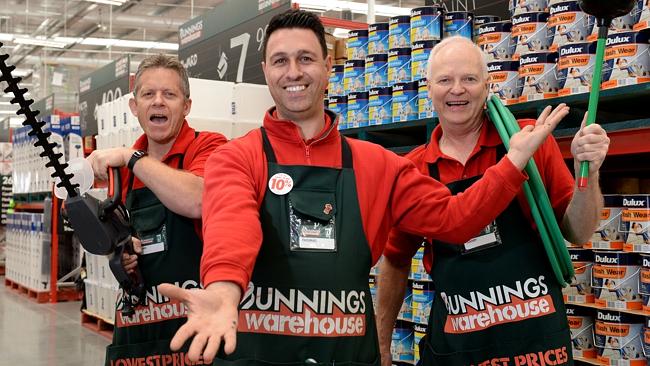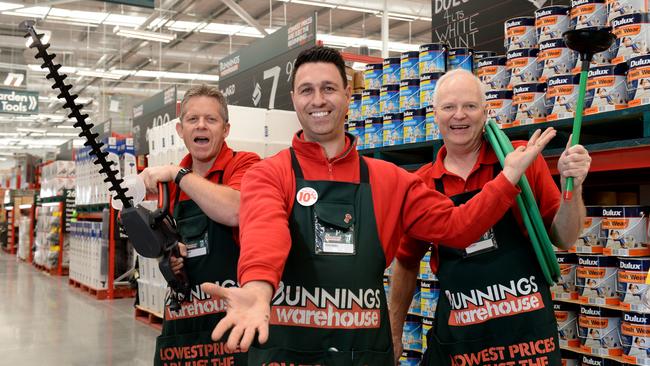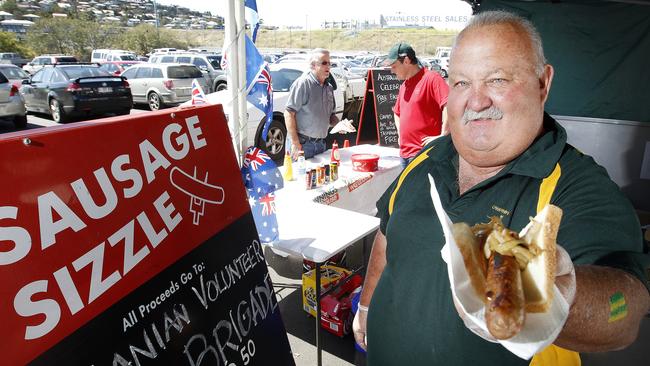We’re all in trouble if Bunnings keeps dominating Masters
MASTERS is flailing, while Bunnings is pulling out all the stops to dominate. But everyone will feel the pain if Masters collapses.

MASTERS is like a hapless apprentice hitting its thumb with a hammer.
The hardware chain set up by Woolworths to take on Bunnings is losing a fortune — $250 million last financial year.
The boss notices the self-inflicted injury, shakes his head and wonders if the apprentice will ever learn, or whether it’s time to cut the young guy loose.
Masters is at risk. Investment analysts are worried about Woolworths share price, down from $35 to $27 so far this year. Some have urged Woolies to give up on hardware.
But if that happens, we’re all stuffed. Bunnings — which already has margins of 11.5 per cent — would run rampant over our DIY weekends. (For comparison, Target has margins of 2.6 per cent and Coles has margins of 4.7 per cent.)
Which is exactly why you might think about driving straight past the Big Green Box this weekend and visit the Big Blue Box instead.
It won’t be easy, but it could be for all our benefit.
Bunnings already plays hardball with the concept of Lowest Price Guarantee.
It sells many items that are subtly different to Masters, making the price guarantee quite tricky to use.
Bunnings sells a 26-litre Esky, for example, while Masters sells a 27-litre one.
Another example: the Fatmax Stanley knife costs $13.94 and comes with a pouch at Bunnings. It costs $11.90 at Masters but if you must have a pouch you’ll need to buy it separately.
(nb all prices were determined through the websites, using a Victorian postcode.)
The consumer organisation Choice says “lowest- or best-price guarantees were mostly not a good indicator that the store was cheaper than its competition.”
It lets the store give a low price to people who bother to shop around and a higher price to anyone who can’t be bothered saving a few dollars. And it probably keeps the price of hardware higher everywhere — what would be the point for your local small hardware store in advertising a sale?
Clever, Bunnings. Very Clever.

So without Masters, it is fair to expect Bunnings prices would shoot up. We need as much competition for Bunnings as possible.
But with a little push, Masters doesn’t have to hang up its boots. In fact, it could get its confidence back surprisingly quickly.
The retail wars are very topsy-turvy, and the companies behind Bunnings and Masters know that as well as anyone. Masters is owned by Woolworths Limited which owns Woolworths Supermarkets. Bunnings is owned by Wesfarmers, which owns Coles.
These days Coles is king, but eight years ago it was Woolworths that dominated, with Coles described as “struggling”.
Coles turned that around with a few clever ploys, including rebranding BiLo as Coles, one dollar milk, and the Down Down campaign — surely one of the most recognisable jingles in Australian advertising history.
Masters has already changed the format and layout of 10 stores, trying to be a bit more like Bunnings — and its working, with sales lifting by 30 per cent. A few more tweaks and Masters could get back into the fray and be a fierce rival.
Giving up now would yield the whole multi-billion dollar hardware market to Bunnings, which has over 300 stores, same-store sales growth of 9 per cent and is opening 15 more next year.
There is definitely room for more than one player.
Masters has had a tough apprenticeship. But any tradie will tell you that’s how you learn the hard lessons. If we give it another chance, its best days could still be ahead.

Jason Murphy is an economist. He publishes the blog Thomas The Think Engine. Follow him on Twitter @jasemurphy.




